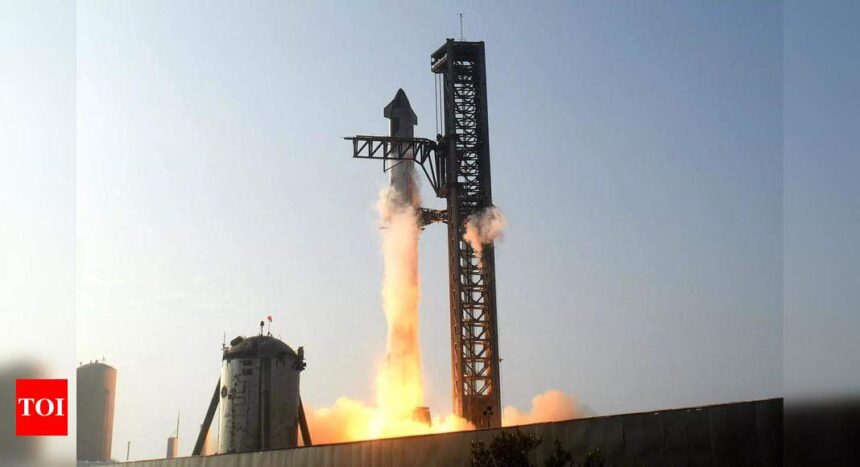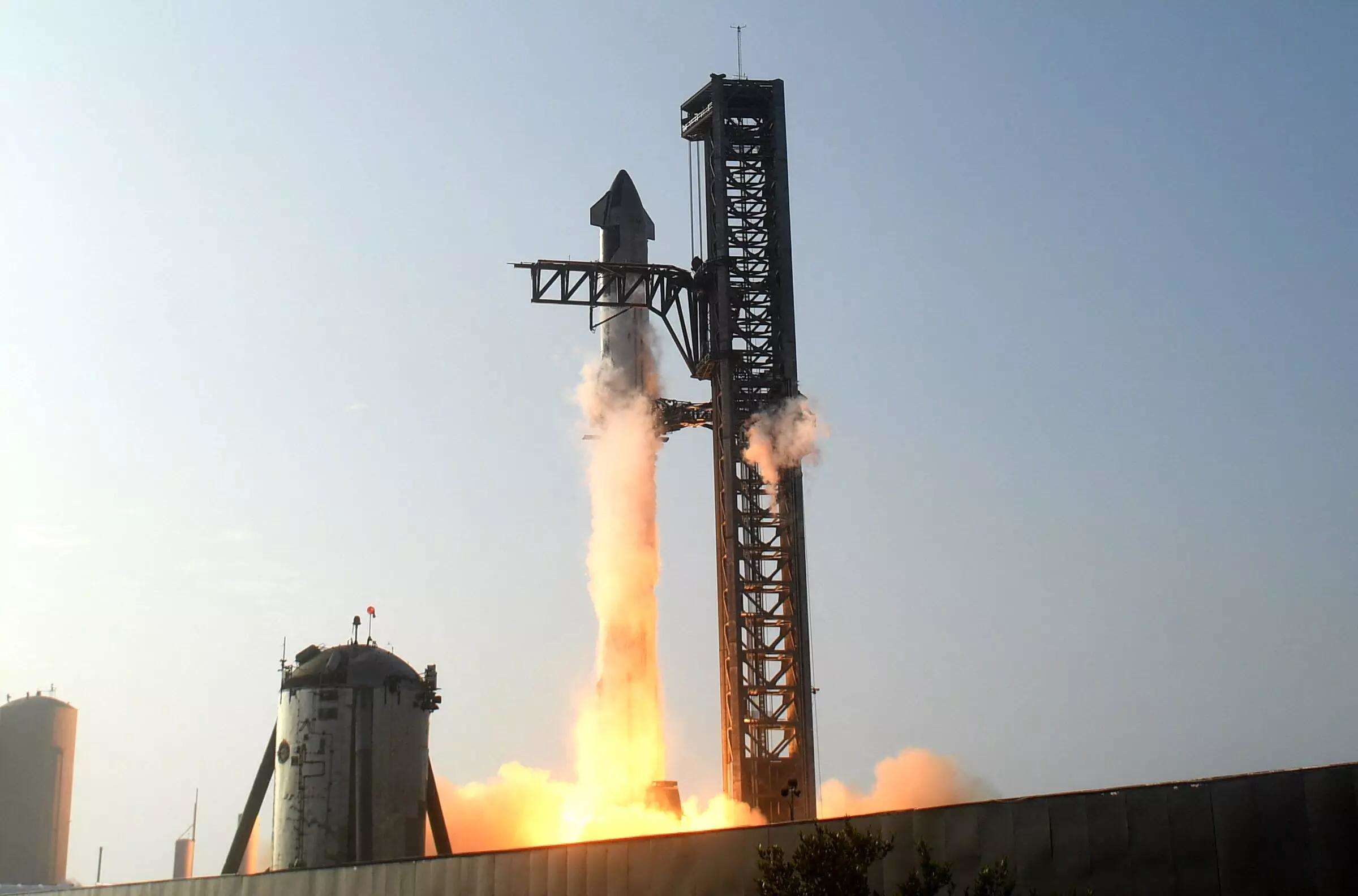In a dramatic turn of events last November, the explosion of one of SpaceX’s supersized Starship rockets temporarily tore a hole in the Earth’s upper atmosphere, according to a new study by Russian scientists. This unprecedented atmospheric disturbance, the researchers say, marks the first time a human-made explosion has caused such a phenomenon.
According to the report by Live Science, the incident occurred on November 18, 2023, when SpaceX launched its colossal Starship rocket from its Starbase facility in Boca Chica, Texas.The launch, only the second for the superheavy Starship, was intended to demonstrate the capabilities of the largest and most powerful rocket ever built. However, the mission took an unexpected turn just four minutes after liftoff.
As planned, the rocket’s first stage — the massive lower section containing its main engines — detached from the upper stage. But in a surprising twist, the first stage exploded shortly after separation, failing to execute its planned return to Earth. Then, only four minutes later, the remaining part of the rocket met a similar fate, disintegrating in a fiery explosion roughly 93 miles (150 kilometers) above the planet’s surface. The cause? A fire sparked as the rocket vented liquid oxygen, leading to what SpaceX CEO Elon Musk described as a “rapid unscheduled disassembly.”
Musk later claimed that, had the rocket been carrying a proper payload, it might have successfully reached orbit. Yet, the incident had already made its mark — quite literally — on the planet’s upper atmosphere.
In a study published on August 26 in the journal Geophysical Research Letters, researchers detailed how the explosion created a significant, albeit temporary, hole in the ionosphere. This layer of the atmosphere, situated between 50 and 400 miles (80 and 650 kilometers) above the Earth’s surface, is where gases are ionized, or stripped of electrons, forming plasma.
“Typically, such holes are formed due to chemical processes in the ionosphere following interaction with engine fuel,” explained Yury Yasyukevich, the study’s lead author and an ionosphere physicist at the Russian Academy of Sciences’ Institute of Solar-Terrestrial Physics. “This is the first known instance where an ionospheric hole was caused by a catastrophic human-made explosion,” Live Science quoted Yasyukevich as saying.
The disturbance was observed by multiple satellites and ground-based stations worldwide, lasting between 30 and 40 minutes before the ionosphere fully recovered. While the peak size of the hole remains undetermined, the study highlights the significant impact human activities can have on our planet’s atmospheric layers.
As space exploration continues to push boundaries, the incident serves as a stark reminder of the unforeseen consequences that can accompany technological advancements.
According to the report by Live Science, the incident occurred on November 18, 2023, when SpaceX launched its colossal Starship rocket from its Starbase facility in Boca Chica, Texas.The launch, only the second for the superheavy Starship, was intended to demonstrate the capabilities of the largest and most powerful rocket ever built. However, the mission took an unexpected turn just four minutes after liftoff.
As planned, the rocket’s first stage — the massive lower section containing its main engines — detached from the upper stage. But in a surprising twist, the first stage exploded shortly after separation, failing to execute its planned return to Earth. Then, only four minutes later, the remaining part of the rocket met a similar fate, disintegrating in a fiery explosion roughly 93 miles (150 kilometers) above the planet’s surface. The cause? A fire sparked as the rocket vented liquid oxygen, leading to what SpaceX CEO Elon Musk described as a “rapid unscheduled disassembly.”
Musk later claimed that, had the rocket been carrying a proper payload, it might have successfully reached orbit. Yet, the incident had already made its mark — quite literally — on the planet’s upper atmosphere.
In a study published on August 26 in the journal Geophysical Research Letters, researchers detailed how the explosion created a significant, albeit temporary, hole in the ionosphere. This layer of the atmosphere, situated between 50 and 400 miles (80 and 650 kilometers) above the Earth’s surface, is where gases are ionized, or stripped of electrons, forming plasma.
“Typically, such holes are formed due to chemical processes in the ionosphere following interaction with engine fuel,” explained Yury Yasyukevich, the study’s lead author and an ionosphere physicist at the Russian Academy of Sciences’ Institute of Solar-Terrestrial Physics. “This is the first known instance where an ionospheric hole was caused by a catastrophic human-made explosion,” Live Science quoted Yasyukevich as saying.
The disturbance was observed by multiple satellites and ground-based stations worldwide, lasting between 30 and 40 minutes before the ionosphere fully recovered. While the peak size of the hole remains undetermined, the study highlights the significant impact human activities can have on our planet’s atmospheric layers.
As space exploration continues to push boundaries, the incident serves as a stark reminder of the unforeseen consequences that can accompany technological advancements.
Source : Times of India









